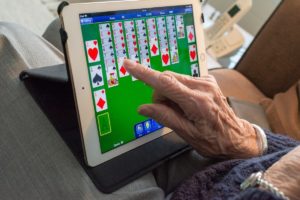
Thomas (T.J.) Ferrante
Editor’s Note: This article is the third of a four-part series discussing specific telemedicine and digital health features in the 2022 Medicare Physician Fee Schedule proposed rule. Read part 1 of this series here and read part 2 here.
On July 13, 2021, the Centers for Medicare and Medicaid Services (CMS) released an advance copy of the calendar year (CY) 2022 Medicare Physician Fee Schedule (PFS) proposed payment rule, to be published on July 23, 2021. While the proposed rule introduces some new virtual care services (including Remote Therapeutic Monitoring), CMS rejected all requests to permanently add new telehealth services next year.
This article discusses: 1) the current state of Medicare telehealth services; 2) requests for new telehealth services; 3) extending the timeframe for Category 3 temporary codes; 4) a new permanent code for virtual check-ins longer than 10 minutes; and 5) whether CMS should continue allowing direct supervision via telemedicine.
Medicare Telehealth Services Post-COVID
Telemedicine and digital health technology is becoming an established part of medical practice and is very likely to persist after the COVID-19 pandemic. According to CMS data, before the Public Health Emergency (PHE), 15,000 Medicare patients each week received a telemedicine service. By April 2020, that number grew to nearly 1.7 million Medicare patients each week. Nearly half of all Medicare primary care visits in April 2020 were telehealth encounters, a level consistent with health care encounters more broadly. Between mid-March and mid-October 2020, over 24.5 million patients (approximately 40% of all Medicare patients) had received a telemedicine service. The data reveals how providers have begun to successfully integrate telemedicine into traditional health care delivery approaches.
The current list of Medicare-covered telehealth services includes approximately 270 services, with 160 services added on a temporary basis (including service categories such as emergency department visits, initial inpatient and nursing facility visits, and discharge day management services) and covered through the end of the PHE.
No New Telehealth Services Proposed For 2022
CMS received several requests to permanently add various services to the Medicare telehealth services list effective for CY 2022. Unfortunately, none of the requests met CMS’ criteria for permanent addition to the Medicare telehealth services list. The requested services are listed in the table below.
CMS found that the codes did not meet the criteria for addition to the Medicare telehealth



 The accomplishments of the program promise change for the state, Schwarting said.
The accomplishments of the program promise change for the state, Schwarting said.